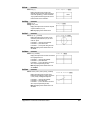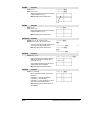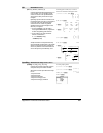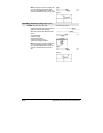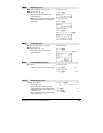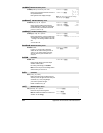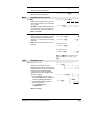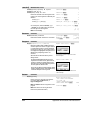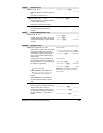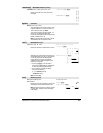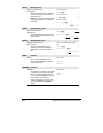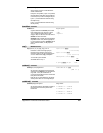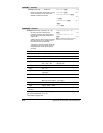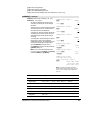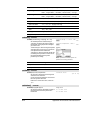
Appendix A: Functions and Instructions 865
right() MATH/List menu
right(
list1
[,
num
]) ⇒
⇒⇒
⇒
list
Returns the rightmost
num
elements contained in
list1
.
If you omit
num
, returns all of
list1
.
right({1,3,ë 2,4},3) ¸
{3 ë 2 4}
right(
sourceString
[,
num
]) ⇒
string
Returns the rightmost
num
characters contained
in character string
sourceString
.
If you omit
num
, returns all of
sourceString
.
right("Hello",2) ¸ "lo"
right(
comparison
) ⇒
expression
Returns the right side of an equation or
inequality
.
right(x<3) ¸ 3
root() CATALOG/MATH/Number menu
root(
expression
) ⇒
⇒⇒
⇒
root
Computes an nth root of x where x can be a real
or complex floating point constant, an integer or
complex rational constant, or a general symbolic
expression.
root(8,3) ¸ 2
root(3,3)
¸ 3
1/3
root(3,0,3)
¸ 1.442249570
rotate() MATH/Base menu
rotate(
integer1
[,
#ofRotations
]) ⇒
⇒⇒
⇒
integer
Rotates the bits in a binary integer. You can enter
integer1
in any number base; it is converted
automatically to a signed, 32-bit binary form. If
the magnitude of
integer1
is too large for this
form, a symmetric modulo operation brings it
within the range.
In Bin base mode:
rotate(0b1111010110000110101) ¸
0b10000000000000111101011000011010
rotate(256,1)
¸ 0b1000000000
If
#of Rotations
is positive, the rotation is to the
left. If
#of Rotations
is negative, the rotation is to
the right. The default is ë1 (rotate right one bit).
For example, in a right rotation:
In Hex base mode:
rotate(0h78E) ¸ 0h3C7
rotate(0h78E,
ë2) ¸ 0h800001E3
rotate(0h78E,2)
¸ 0h1E38
0b00000000000001111010110000110101
produces:
0b10000000000000111101011000011010
The result is displayed according to the
Base
mode.
Important: To enter a binary or hexadecimal
number, always use the 0b or 0h prefix (zero,
not the letter O).
rotate(
list1
[,
#ofRotations
]) ⇒
⇒⇒
⇒
list
Returns a copy of
list1
rotated right or left by
#of
Rotations
elements. Does not alter
list1
.
If
#of Rotations
is positive, the rotation is to the
left. If
#of Rotations
is negative, the rotation is to
the right. The default is ë1 (rotate right one
element).
In Dec base mode:
rotate({1,2,3,4}) ¸
{4 1 2 3}
rotate({1,2,3,4},
ë2) ¸
{3 4 1 2}
rotate({1,2,3,4},1)
¸
{2 3 4 1}
Rightmost bit rotates to leftmost.
Each bit rotates right.



